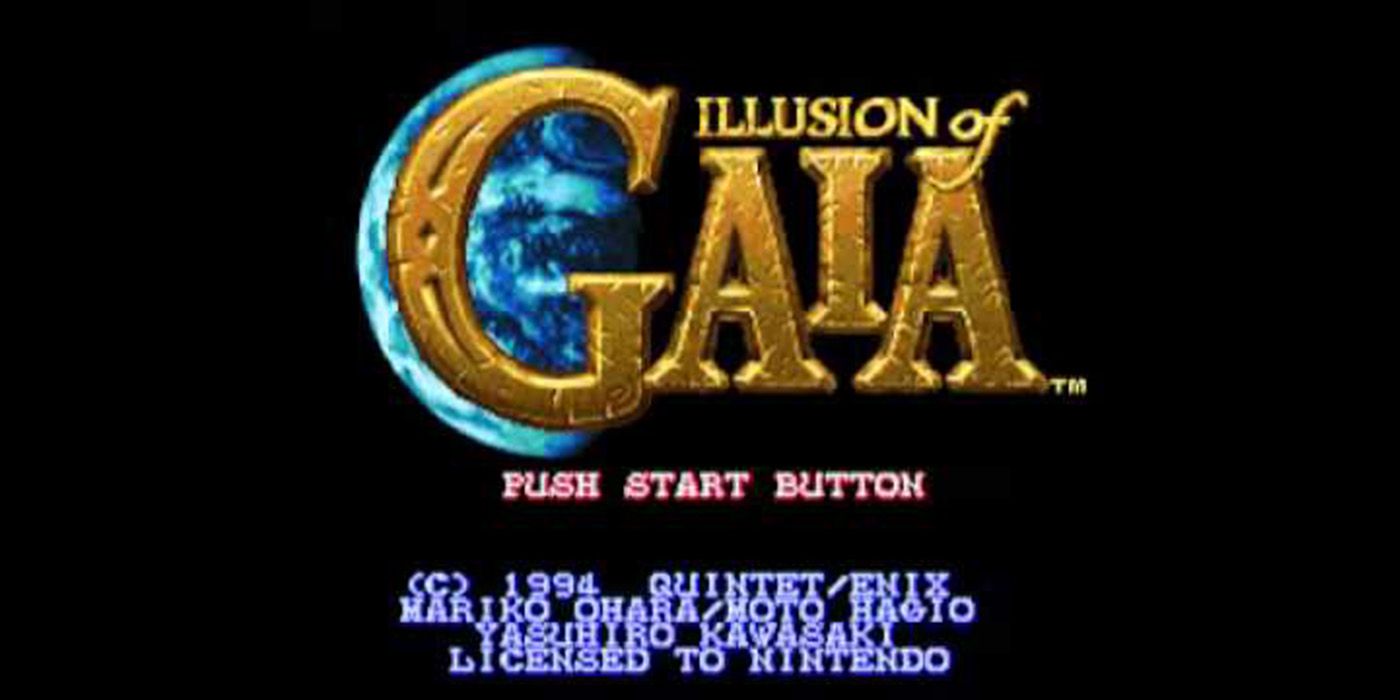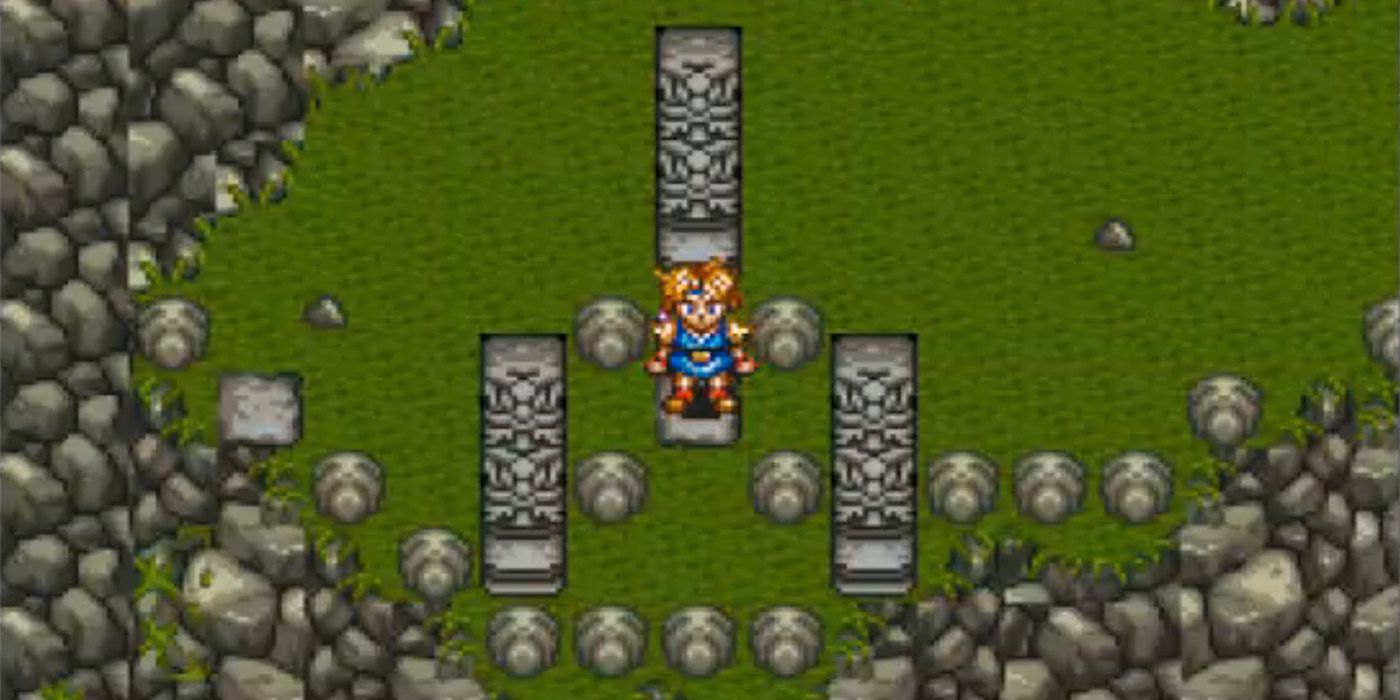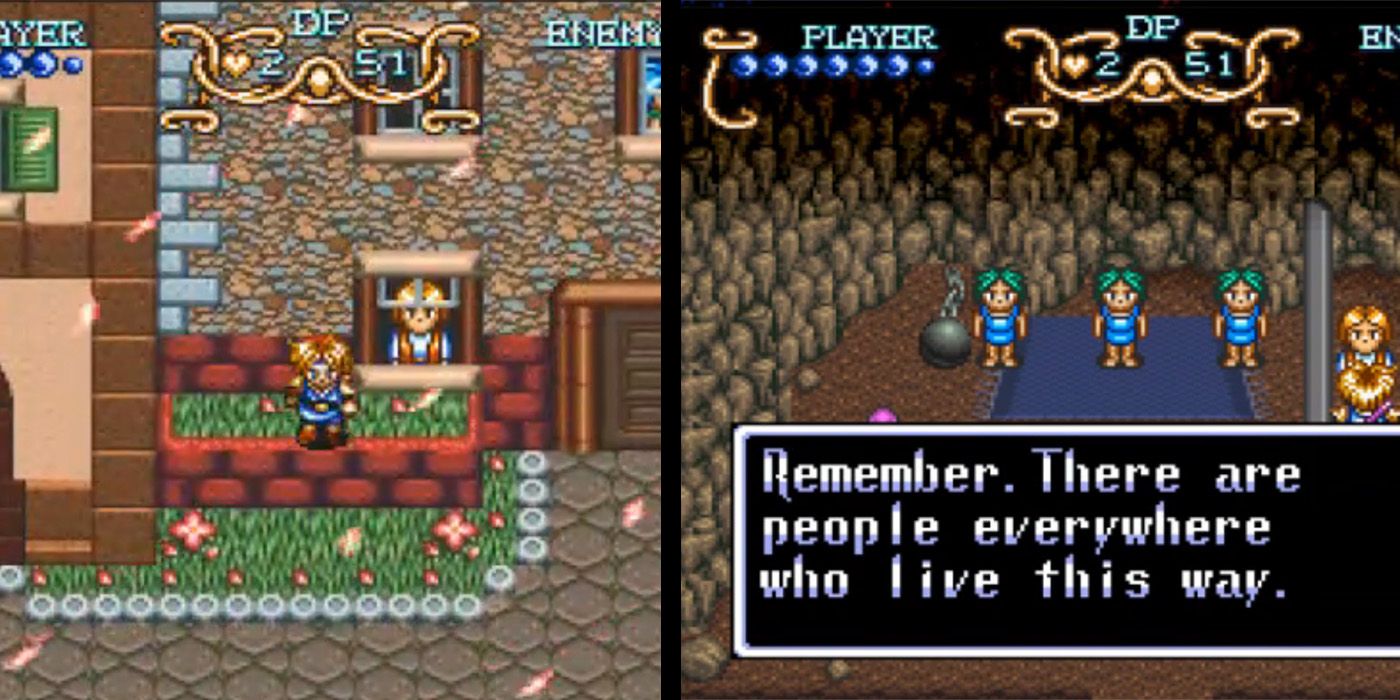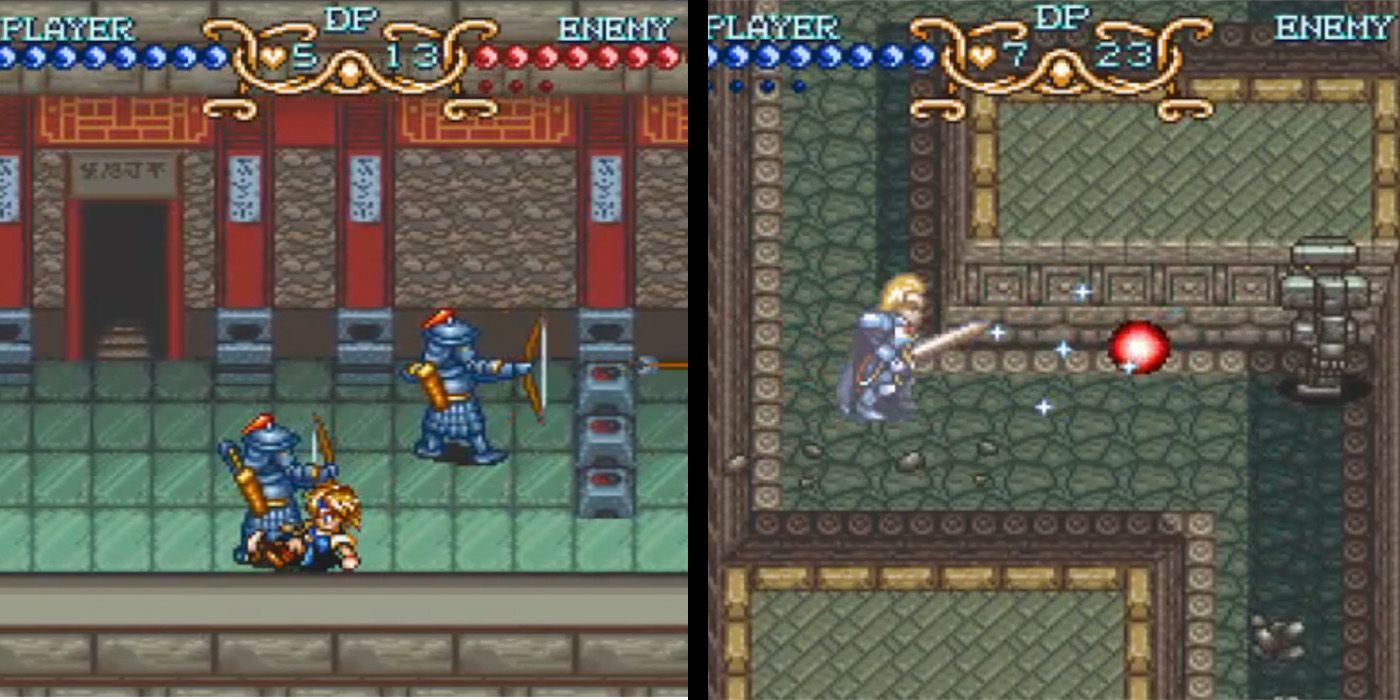
A number of well-known Japanese RPG franchises got their start, or really found their footing, in the 1990s. While series like Final Fantasy or Dragon Quest debuted in the 80s, entries on the Super Nintendo solidified them as bonafide hits. Other franchises like Star Ocean and the Tales series got their start in the 1990s as well, providing the major franchises with some competition. With so many storied developers releasing excellent work, when the small studio Quintet created Illusion of Gaia for Enix, it seemed that another quality franchise was on its way, yet somehow success never materialized for Quintet.
Illusion of Gaia arrived on the Super Famicom (SNES) in November of 1993, right in the middle of a number of huge releases. Dragon Quest 5 and Final Fantasy 5 had shipped the year prior, to critical acclaim and multi-million unit sales. Secret of Mana's successful launch months before Illusion of Gaia's release showed that Action RPGs had appeal. With Final Fantasy 6 already release looming in Japan, and so many great SNES RPGs available, Illusion of Gaia had a tight window to impress. By and large, the game delivers a well-paced and quirky tale, that goes to some dark places thematically, with simple action RPG mechanics that keeps combat fast and fun.
RELATED: Why Final Fantasy 5 and 6 Deserve the Remake Treatment

Illusion of Gaia's story is unique in that it takes place on a semi-fictional version of Earth. The game features Incan ruins, the Great Pyramid of Giza, Angkor Wat, the Great Wall of China, the Tower of Babel, and a host of cities meant to evoke certain regions of the world. For a fantasy RPG to be so grounded in real world geography was an interesting choice at the time. While games like Star Ocean or Tales of Phantasia took technological and architectural inspiration from the real world, the player is not supposed to make a direct comparison. In Illusion of Gaia, the player is being reminded that this is Earth and is expected to remember that as they play.
Also noteworthy is the person who wrote the story for Illusion of Gaia, as it was another move by Quintet to think outside the box. The developer brought in well-known science fiction writer Mariko Ohara to pen the script for Illusion of Gaia. Ohara gained notoriety in Japan for her novel Hybrid Child, released just before Illusion of Gaia, and has won countless science fiction prizes since then.
In addition to Ohara, Quintet reached out to manga author Moto Hagio for the character designs. Hagio is the mother of modern shojo manga, or manga intended for a young female audience. Her work The Heart of Thomas (1973-1975) is considered one of the earliest examples of Boys Love manga, stories pairing beautiful boys together in oft tragic romance.

Here is where Ohara's writing really shines in Illusion of Gaia. Where the dialogue sometimes comes across a little clunky, the themes in Illusion of Gaia are strong. There is often a struggle at the core of many JRPGs between good and evil, this is nothing new. In Illusion of Gaia however, the good and evil aren't simply a plucky band of adventurers versus a tyrannical entity, there is no Kefka here to hate.
The good and the evil are the two sides of humanity, existing as a duality, with compassion and cruelty on display in equal measure. The city of Freejia exemplifies this best, with a facade of absolute beauty hiding its seamy backstreets where, the downtrodden live and where slaves are traded on the open market.
Even the protagonist, Will, has to grapple with which side he is on. In order to complete the game 100% and get that platinum trophy as it were, Will must give up the location of an escaped slave in hiding to receive a key item. The player doesn't have to do this, but if they want to complete everything and visit the bonus dungeon, it comes at a moral cost. The slave trade prevalent throughout the game is used often to show humanity's dark side.

Illusion of Gaia often gets lumped in with RPG titles of the era, yet it shares very little DNA with the likes of Final Fantasy or even the game it is often compared to, Secret of Mana. The game is much more of an Action Adventure game having more in common with The Legend of Zelda than Dragon Quest. Fighting enemies takes place in real time on screen, while the dungeons in the game are puzzles that require Will to use newly learned skills to dive deeper into them. While Link may find the Hookshot to reach high places, Will learns Psycho Slider to slip through tight spaces and open up new areas.
What likely saddles Illusion of Gaia with the RPG (or JRPG) label is the presentation and narrative, which skews heavily into JPRG tropes of the time. A young person and his friends travelling the world to defeat evil, with story beats and an art style that felt so familiar to RPG fans, it became conflated with a genre it isn't really connected to. It is a strange, quirky little game that really doesn't have any contemporaries, which is why it stands out so much as a 90s classic.
MORE: Indie Game Sea of Stars Is Inspired By Every Classic '90s RPG

